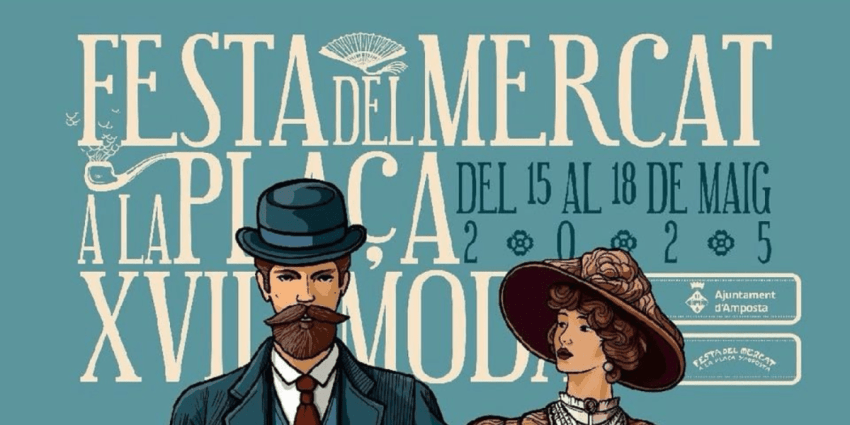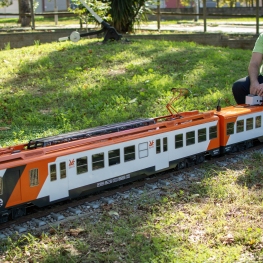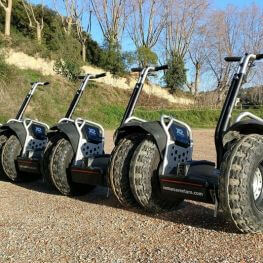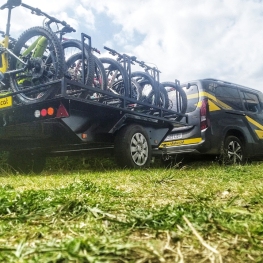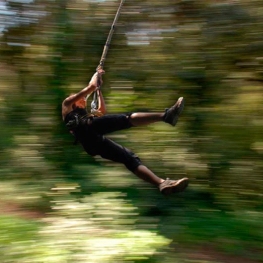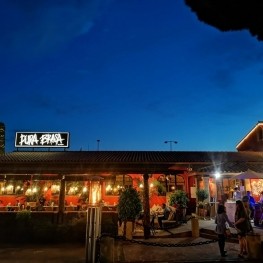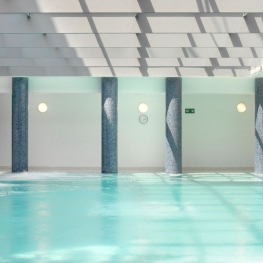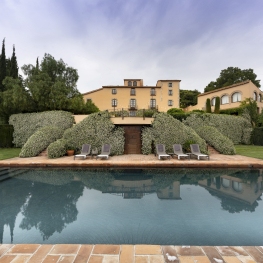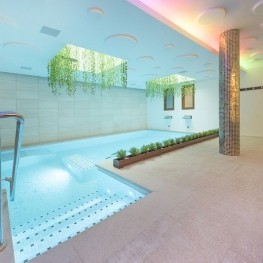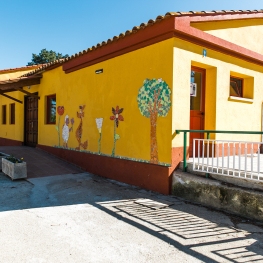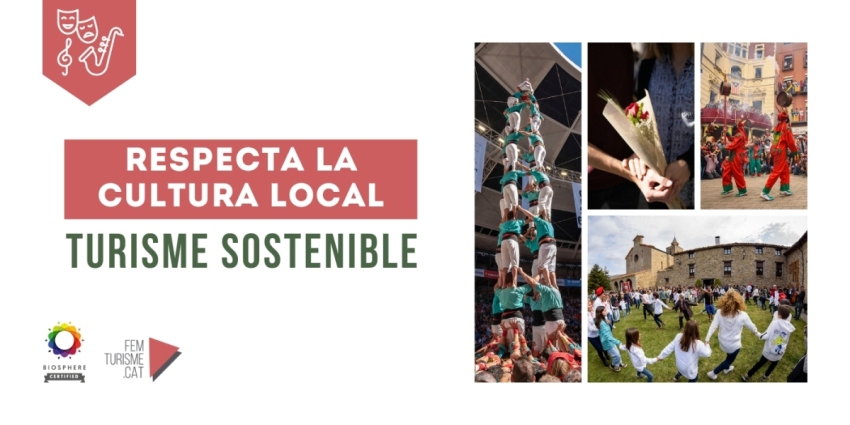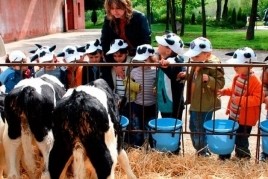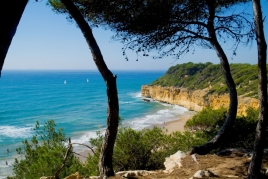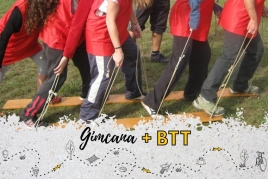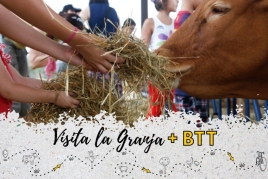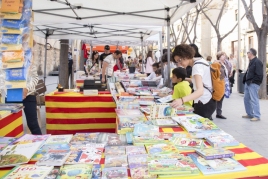Walk of the trees of Santa Maria de Palautordera
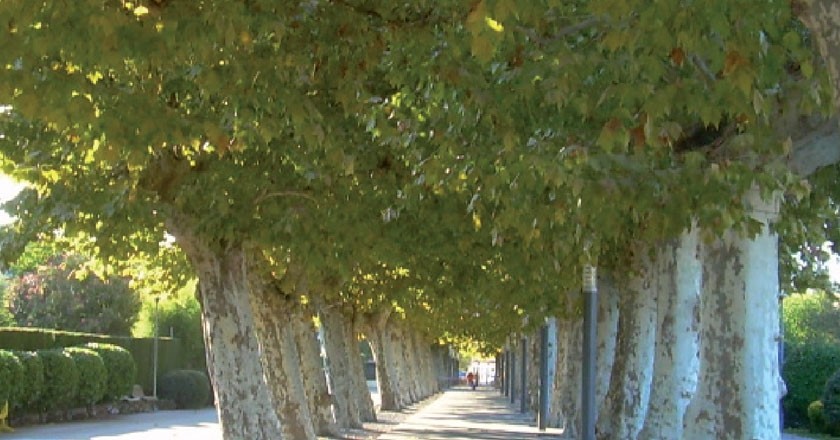
Santa Maria de Palautordera, at the foot of the Montseny, enjoys an eminently forested municipal area, where we can find holm oak forests, pine trees, riverside forest...
Located in the massif of the massif is a place very rich in forest variety. On this walk we want to make you enjoy some of the most significant trees and places in the town. The itinerary is for areas near the nucleus, for other places in the municipality we can also find trees or groves of great interest: Riu Sec area, Source of the Enamorats or Sant Josep, Reguissol riverbank forest...
Do you cheer up?
The point of departure and arrival may be the point of tourist information. The total distance of the route is 5.6km. It is an itinerary that can be made to last a whole day, observing trees and landscapes, eating in one of the parks or in one of the many restaurants that can be found near the itinerary.
Suitable for people with reduced mobility except the stretch of forest of Ribera, which can be saved by the New Road of Sant Esteve.
We leave the Tourist Information Point northbound, on the left side of the roundabout, along the Paseo del Estatut, leaving the Quatre Hereus Park apart. Here we can already enjoy the first stretch of road with shadow bananas, only those on the right side of the road are preserved, the rest are replanted.
The shadow banana
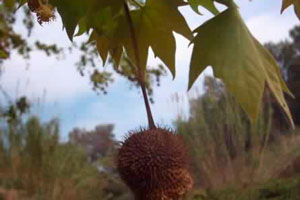 The shade banana (Platanus hybrida) is a deciduous, large, broad-walled tree that can reach 40 meters. It has a right, cylindrical trunk and a thin green gray bark that periodically falls in the form of irregular plates. Its fruits are small, numerous and are grouped two by two, they are shaped like balls (4 centimeters in diameter), and they release the seeds to get rid. They bloom in early spring. The flowers have a long penducle and are not showy at all. The banana tree can live a few centuries. It is located in the streets and squares, as it has an excellent shadow. They make nests the heron, the sparrow, the greenish, greenish, goldfinch. In the old banana trees they raise the owl, the autillo and the owl. Its wood is used to make toys and paddles. The leaves are large and have three or five serrated lobes. The petiole is long and finished in the shape of a pipe and from it three main nerves come out and from these, others of sub-main ones.
The shade banana (Platanus hybrida) is a deciduous, large, broad-walled tree that can reach 40 meters. It has a right, cylindrical trunk and a thin green gray bark that periodically falls in the form of irregular plates. Its fruits are small, numerous and are grouped two by two, they are shaped like balls (4 centimeters in diameter), and they release the seeds to get rid. They bloom in early spring. The flowers have a long penducle and are not showy at all. The banana tree can live a few centuries. It is located in the streets and squares, as it has an excellent shadow. They make nests the heron, the sparrow, the greenish, greenish, goldfinch. In the old banana trees they raise the owl, the autillo and the owl. Its wood is used to make toys and paddles. The leaves are large and have three or five serrated lobes. The petiole is long and finished in the shape of a pipe and from it three main nerves come out and from these, others of sub-main ones.
We follow the Paseo to the Àngel Guimerà street, which we take to the left and follow it until we cross the Mas d'en Sala street, there we find on the left the Buxeda Tower, next to the Can Sala Farmhouse, but it gives its name to all neighborhood. From outside the courtyard of the Buxeda Tower (550m. 5min.) We can observe the huge Cedars on the side, the Linden in the front is covered by the wall of the house itself. The Buxeda Tower was built at the beginning of the last century by some jewelers from Barcelona.
Cedar
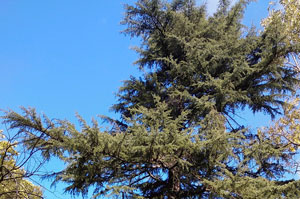 It is a genus of flowering plants of the family of the Pinaceae, they take the form of evergreen trees, of acicular leaves grouped in fascicles and ovoid and right pine cones, which fall with maturity. They are large tree tops and conical figure in youth going to the tabular form when they are old. A cedar forest called cedreda.
It is a genus of flowering plants of the family of the Pinaceae, they take the form of evergreen trees, of acicular leaves grouped in fascicles and ovoid and right pine cones, which fall with maturity. They are large tree tops and conical figure in youth going to the tabular form when they are old. A cedar forest called cedreda.
We continue the street, slightly lying to the right to go to the left to take the path of the cemetery and we will arrive, there we can find some impressive Cypresses, (1.000m. 6 min.) Typical in many necropolis of our culture.
Mediterranean cypress
It is a tree native to the eastern Mediterranean area from Iran to Libya and is currently made throughout the Mediterranean area in places where frost does not exceed -10 ° C.
The characteristic columnar form of human-made plantations is actually a mutation. They can reach 35 m high and be 100 years old. The leaves are imbricated. Flowering is monoecious with male and female flowers on the same tree, the emission of pollen is February-March. Fruits in the form of more or less rounded globules make about 40 mm. Cypresses live in places that would be too arid for certain types of pines or for holm oaks. Wood for joinery or construction, scented and very resistant to rot.
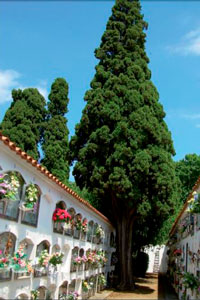 When we descend from the cemetery, we will leave the first turn to the left, which would take us to the Reguisssol torrent (it may be interesting to see if we have time) and we will ascend again towards the Can Sala neighborhood, we will take the first street on the left, Street dedicated to Martí Boada, eminent geographer, naturalist and doctor of Environmental Sciences of Sant Celoni and who was the director of the Workshop School that carried out the Arboretum, which is the next place we will visit, on the left hand side of the street.
When we descend from the cemetery, we will leave the first turn to the left, which would take us to the Reguisssol torrent (it may be interesting to see if we have time) and we will ascend again towards the Can Sala neighborhood, we will take the first street on the left, Street dedicated to Martí Boada, eminent geographer, naturalist and doctor of Environmental Sciences of Sant Celoni and who was the director of the Workshop School that carried out the Arboretum, which is the next place we will visit, on the left hand side of the street.
In the Arboretum (1,500m. 16 min.) We can spend a whole day, the Arboretum gathers approximately eighty species of trees, which are those that can be found by the massif, and that at the same time constitute the map of the trees of the country. We will leave the Arboretum through the same place that we have entered, the main gate, leaving the exits of the Reguissol Park and the Washrooms, we will take Vic Street, until we meet, at the next crossing Mas d'en Sala Street, which we will take to turn left to the next corner, turn right, on Olot Street, to the Statute Promenade.
In the same corner of Olot Street with the Paseo del Estatuto we find the Deó Tower, where we can admire from the street the immense cup of the Tilo and some very high cedars, let's notice that what is in the front of the house is very damaged by the rays
Lime trees
The lime trees (the tiliàcies) are native to the temperate regions of the northern hemisphere. They are trees of good volume, reaching between 20 and 40 m high, with straight woods up to one meter in diameter. They are deciduous, with cordiform leaves, with the serrated edge, up to 20 cm wide, dark green in the beam and light green silver in the underside, strongly aromatic.
The flowers of this tree are very aromatic, in the form of small yellow clusters with an elongated bract. These are known for their healing properties to fight colds, or other conditions. They are also used as tranquilizers or sleeping pills prepared in the form of an infusion or tea called tila. They get to live up to 900 years, growing slowly. The leaves that fall from the linden, when decomposing, provide a humus of high mineral and nutrient content, which is very useful for improving scarce lands of minerals and other nutrients.
We will take the Paseo del Estatut towards the town, we will pass over the Torrent del Reguissol and we will see the Park of the same name, in front of the church of Santa María cross the road and enter the Plaza Mayor (2,020 m. 23 min.) we will cross and in the end we will take the main street on the left, along the pedestrian island, until the Paseo del Remei ends, where we will find another exponent of the Plataneros that were planted on both sides of the roads to enjoy the shade, this section was the road that went from Santa Maria de Palautordera in Sant Esteve de Palautordera.
We will make this pleasant stretch of walk to the Hermitage of Remei (2,970m. 34 min.), A good stretch of walk in which in spring, summer and autumn you can enjoy a refreshing shadow. Once in the hermitage we will take the street of the hermitage on the right hand side, crossing the new road from San Esteban to Europa street, following the indicators of the itinerary from Reguissol to Tordera. and we will continue straight, crossing a small park to the Paseo de los Deportes that we will take to the right until the end, in the Paseo de las Escoles that we will make to the left, passing in front of the municipal swimming pool and the Tennis Club, to arrive - we in the Fontmartina Park (3,600m. 41 min). In this Park, in addition to the Source, we can also observe shadow bananas of great heights.
At the end of the Park, on the left, a little hidden there are some stairs that go down to the Tordera River (65 steps), there we can enjoy a riverbank forest replanted with shadow bananas.
The riverside forests
The riverside forests are deciduous forests that grow on both sides of the river courses on soils that, from a certain depth, are usually soaked with water coming from the river or neighboring torrent (groundwater). In the Mediterranean and sub-Mediterranean area, they are the most productive because they rarely lack water, the main limiting factor of vegetation growth in these areas.
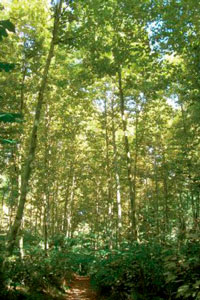 If we add to this fact the richness in mineral nutrients that usually characterize the soils formed from sediments carried by river waters (floods), it is not surprising that the malls, the forests that correspond to most of the banks with soils deep in rivers and streams, they can easily exceed 20 meters high. The vegetation of the riverside forests is adapted to periodic flooding that can eventually turn or uproot trees and shrubs. A Palautordera have been planted for timber use and we find basically banana trees, although acacias also grow, and riverside forest trees such as: ash, verse, willows...
If we add to this fact the richness in mineral nutrients that usually characterize the soils formed from sediments carried by river waters (floods), it is not surprising that the malls, the forests that correspond to most of the banks with soils deep in rivers and streams, they can easily exceed 20 meters high. The vegetation of the riverside forests is adapted to periodic flooding that can eventually turn or uproot trees and shrubs. A Palautordera have been planted for timber use and we find basically banana trees, although acacias also grow, and riverside forest trees such as: ash, verse, willows...
We will follow the course of the river along the path, we observe dry stone walls, from the early twentieth century to contain the waters; we can enjoy the sound of water and wind in the high leaves of the Plataneros until we find a cemented road, which we will take on the right, leaving the ford that crosses the Tordera, and going up to Can Balada, the first mill that produced electricity to the town.
We will go up to the roundabout, which we will cross to take the Calle Industria, where half drowned by the houses and the asphalt we can still find a great clam (4,600m. 53 min.). We will continue until we take Antoni Gaudí street on the right, until the end, where on Nou street, taking the left hand we will reach the Ronda Sur, where we will turn right for a few minutes to reach the Tourist Information Point, from where we have left (5,600m. 1 hour and 5 min.).
The clams
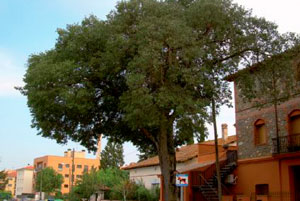 It is a deciduous tree with a dense, rounded and very branched crown , its trunk is straight and with the smooth and gray bark, it can reach a height of 25 m. The leaves, rough to the touch and with three very marked nerves on the obverse, are simple, alternate, pubescent, ovate or lanceolate, presenting a certain asymmetry, with the finely serrated margin, the long petiole and the crooked and elongated tip. The flowers, hermaphrodite or male, are small, lonely, very pedunculated, yellowish-green and appear between April and May in the armpits of the leaves.
It is a deciduous tree with a dense, rounded and very branched crown , its trunk is straight and with the smooth and gray bark, it can reach a height of 25 m. The leaves, rough to the touch and with three very marked nerves on the obverse, are simple, alternate, pubescent, ovate or lanceolate, presenting a certain asymmetry, with the finely serrated margin, the long petiole and the crooked and elongated tip. The flowers, hermaphrodite or male, are small, lonely, very pedunculated, yellowish-green and appear between April and May in the armpits of the leaves.
The fruit is an edible drupe, the almeza, small the size of a pea, round and smooth with a lot of bone and little pulp, green 22 before ripening and dark, almost black, when it matures in autumn. In addition to the use as an ornamental tree, lime has been traditionally used to make agricultural tools such as gallows, shovels, mangoes, yokes, etc. taking advantage of its flexibility and duration; Its branches have been used as feed for livestock, and firewood and coal were also obtained, so it is frequently found near the farmhouses. It has medicinal properties such as astringent, lenitive, antidiarrheal and stomach. The roots had been used to extract a yellow dye to dye silk.
Source: City Council of Santa Maria de Palautordera
You may also be interested in: Get to know the flora of Catalonia
What to do
Parc Ferroviari de Cal Gavatx
Les Franqueses del Vallès (a 14.7 Km)Enjoy a fun and enriching experience with your family that will bring…
Segway Comarca Aventura
Arenys de Munt (a 13.3 Km)Segway en el Maresme, with the spirit of enjoying our surroundings, Comarca…
Where to eat
Pura Brasa
Pineda de Mar (a 21.9 Km)A unique gastronomic experience: Pura Brasa is a close and fun concept…
Where to sleep
Hotel Blancafort Spa Termal
La Garriga (a 13.3 Km)Come to the Hotel Blancafort Thermal Spa and disconnect in the quiet…
Can Mora de Dalt
Sant Vicenç de Montalt (a 13.4 Km)15th century farmhouse that has belonged to the same family for 18…
Sono and Spa Adults Only
La Garriga (a 14.1 Km)Sono & Spa Adults Only is an aparthotel located on the outskirts…
Casa de Colònies Mogent
Llinars del Vallès (a 6.4 Km)Welcome to the Mogent Colony House! A magical place where children and…

